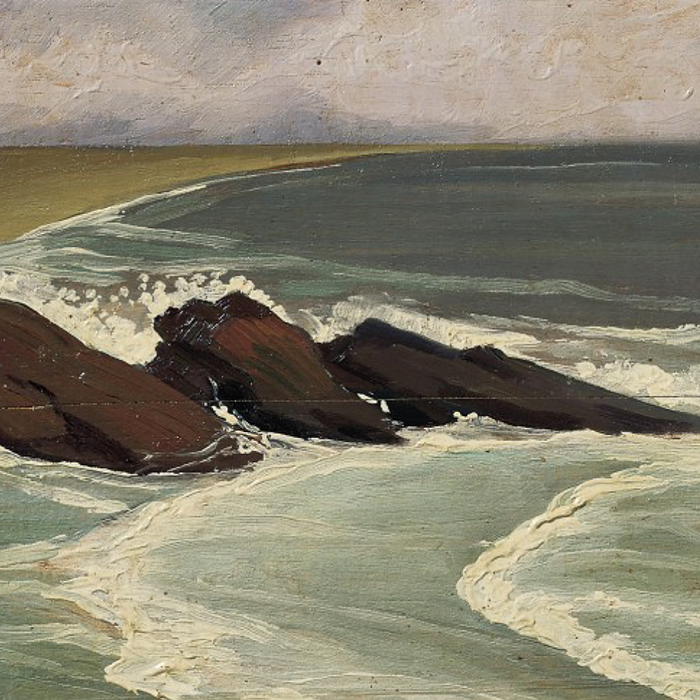Castelao as a Plastic Artist
He was a self-taught artist who wished to become a painter. An excellent cartoonist and caricaturist, as well as an illustrator and graphic designer, he cultivated realism, modernism, symbolism and expressionism. His scarce plastic work would have achieved little value if we didn’t consider his will to create a Galician iconography and to communicate those signs of identity of a Galicia that owns its destiny.

Logo designed for the newspaper Galicia, 1922. With this font recreated by him, he labelled books, posters and headers of Galicianist publications. Based on Romanesque inscriptions, this font is his greatest legacy in graphic design.
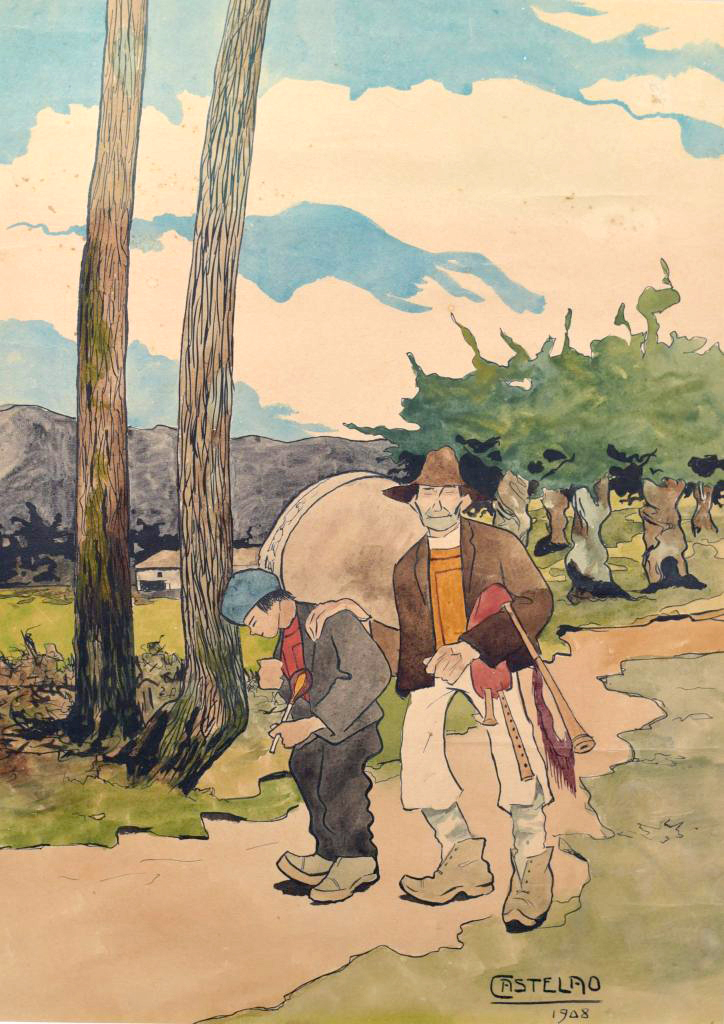
A volta da festa (Coming Back from the Party), 1908. Watercolor and ink on paper.
Montenegro gallery, Vigo
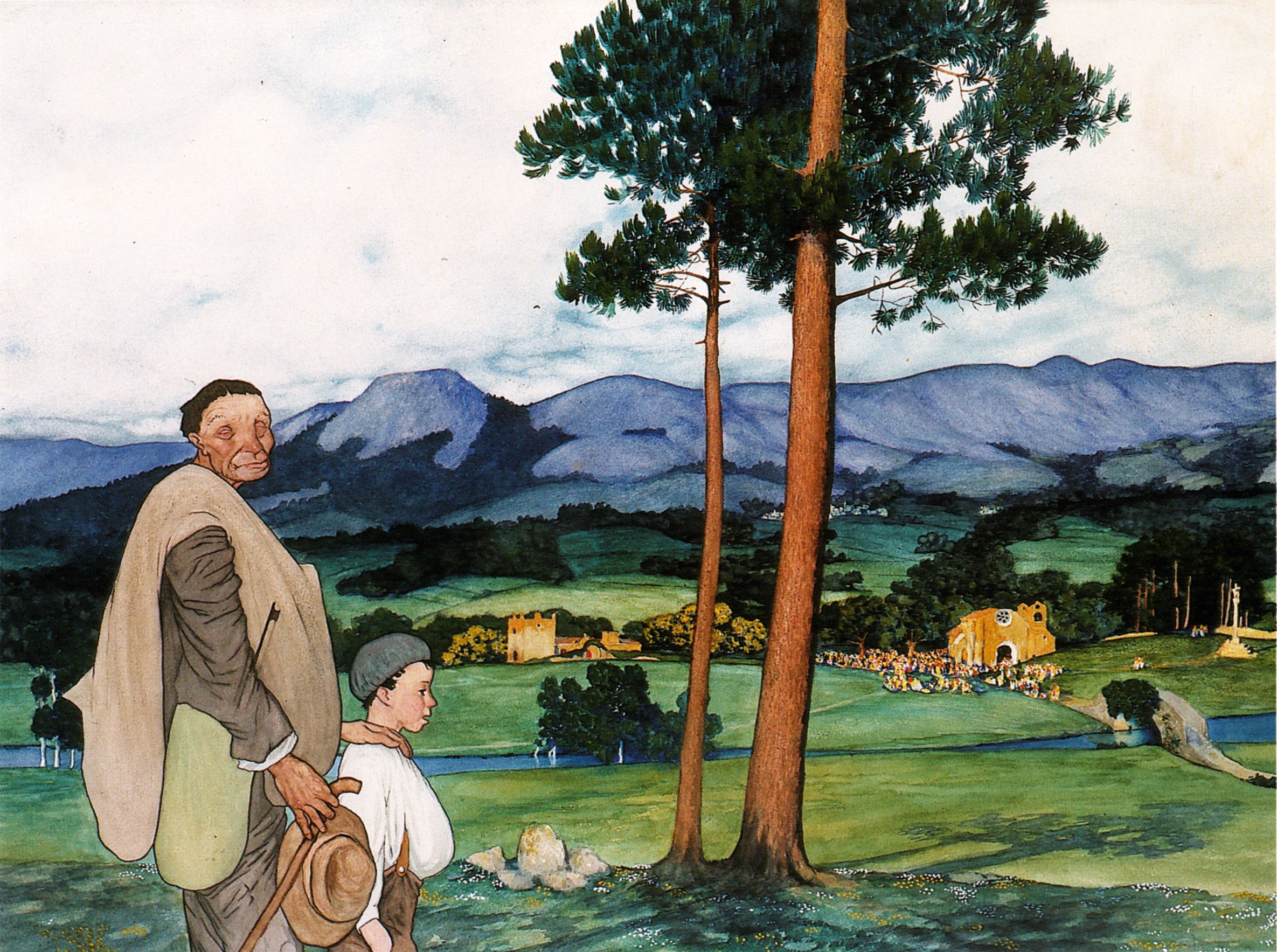
Cego con lazarillo (A Blind Man With His Guide), 1915. Oil on canvas.
Picture of Tríptico dos cegos (Triptych of the Blind), made for the Balneario de Mondariz. The subject of blind people will be recurring in Castelao's work because he suffered a retinal detachment in 1914 for which he will be treated for the rest of his life.
Museum of Pontevedra, Real Academia Galega
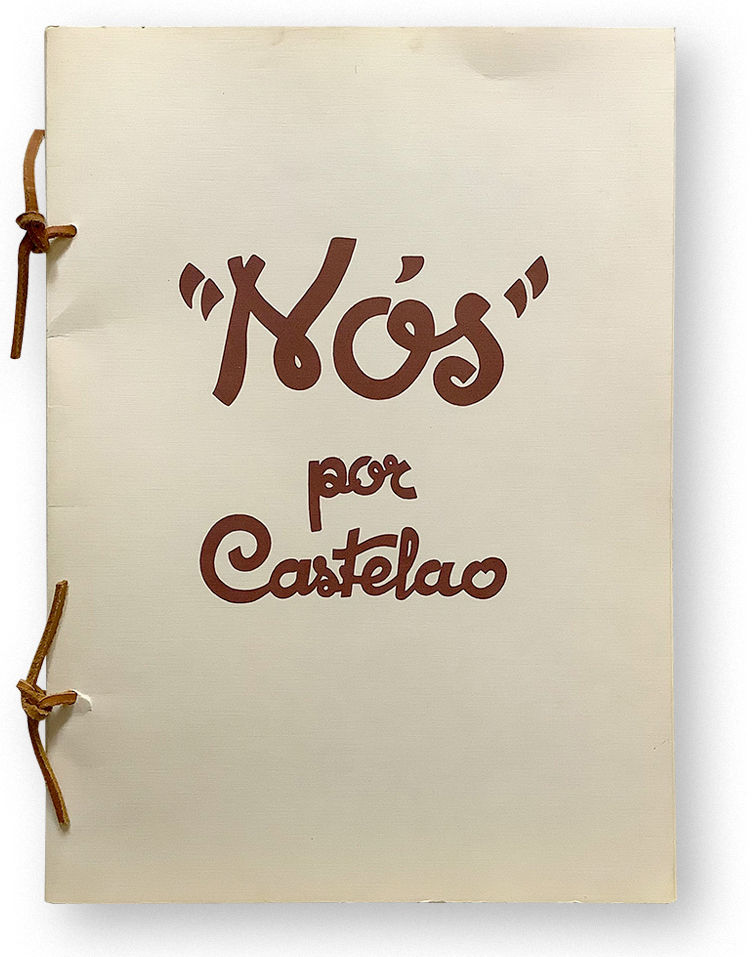
Nós
1920-1931
Album with 49 prints.
The pictures reflected the harsh social reality of Galicia at the time and the drawings were exhibited between 1920 and 1924 in nine Galician cities and Madrid. The samples were a framework for holding conferences to expose Galicianist ideas. He didn’t publish any book until 1931, when it was printed in the prestigious Spanish printing house of Hauser y Menet.
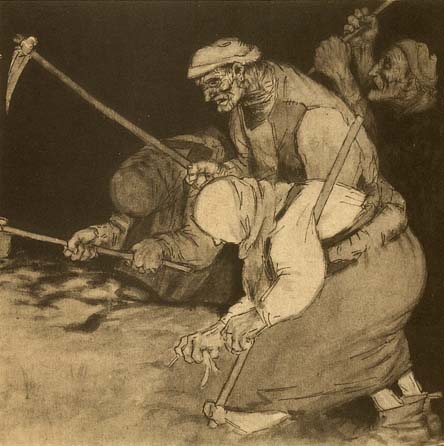
Stamp from the album Nós
The Tax Slaves
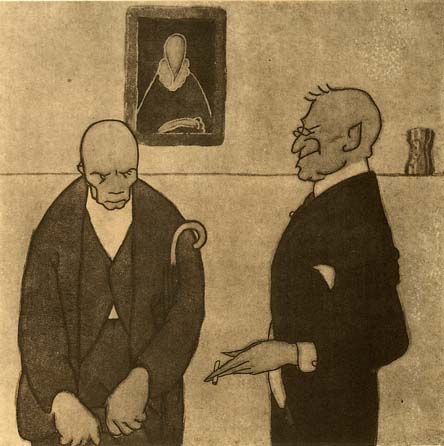
Stamp from the album Nós
— Your daughter must be a grown girl by now, isn’t she?
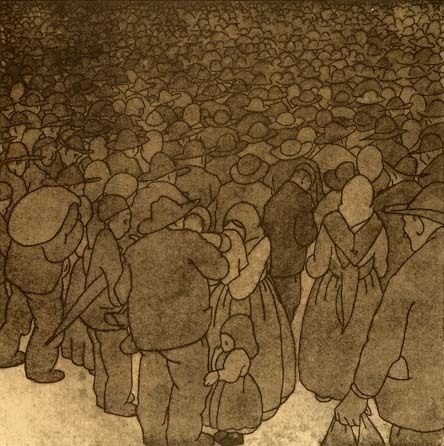
Stamp from the album Nós
In Galicia, you don't ask for anything. You just emigrate.
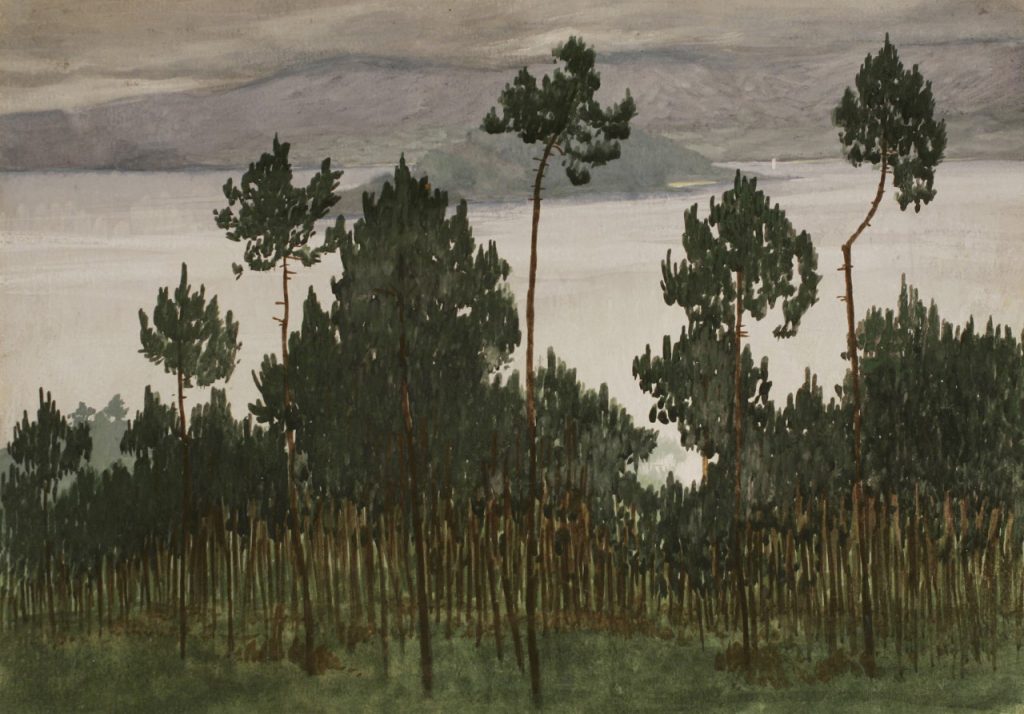
Frente a tambo
1916-1936.
Watercolour on paper.
Private collection.

Escena de guerra. Os froitos galegos da civilización cristiá (War Scene. The Galician Fruits of Christian Civilization). 1939.
Ink drawing on paper. Carlos Maside Museum, Sada.

As Cores (The Colours). 1931. Watercolor on paper. Carlos Maside Contemporary Art Museum.

Os álbums da Guerra (War Albums)
Since November 1936, Castelao lives in Valencia, where the Government of the Republic is installed. There he conceives and publishes his first two albums, with ten prints each, inspired by ten stories told by Galician soldiers who fled from Galicia when it was occupied by fascism.

Get up, Poor of the World
1937
Picture of Galicia mártir (Galicia, Martyr).
Printed by the Republic’s Ministry of Propaganda.

All for the Fatherland, the Religion and the Family!
1937
Picture of Atila en Galicia (Attila in Galicia)
Printed by the CNT anarchist union.

Harangue
1938
Picture of Milicianos (Militiaman).
Edited by the Galician Antifascist Popular Front of New York.
